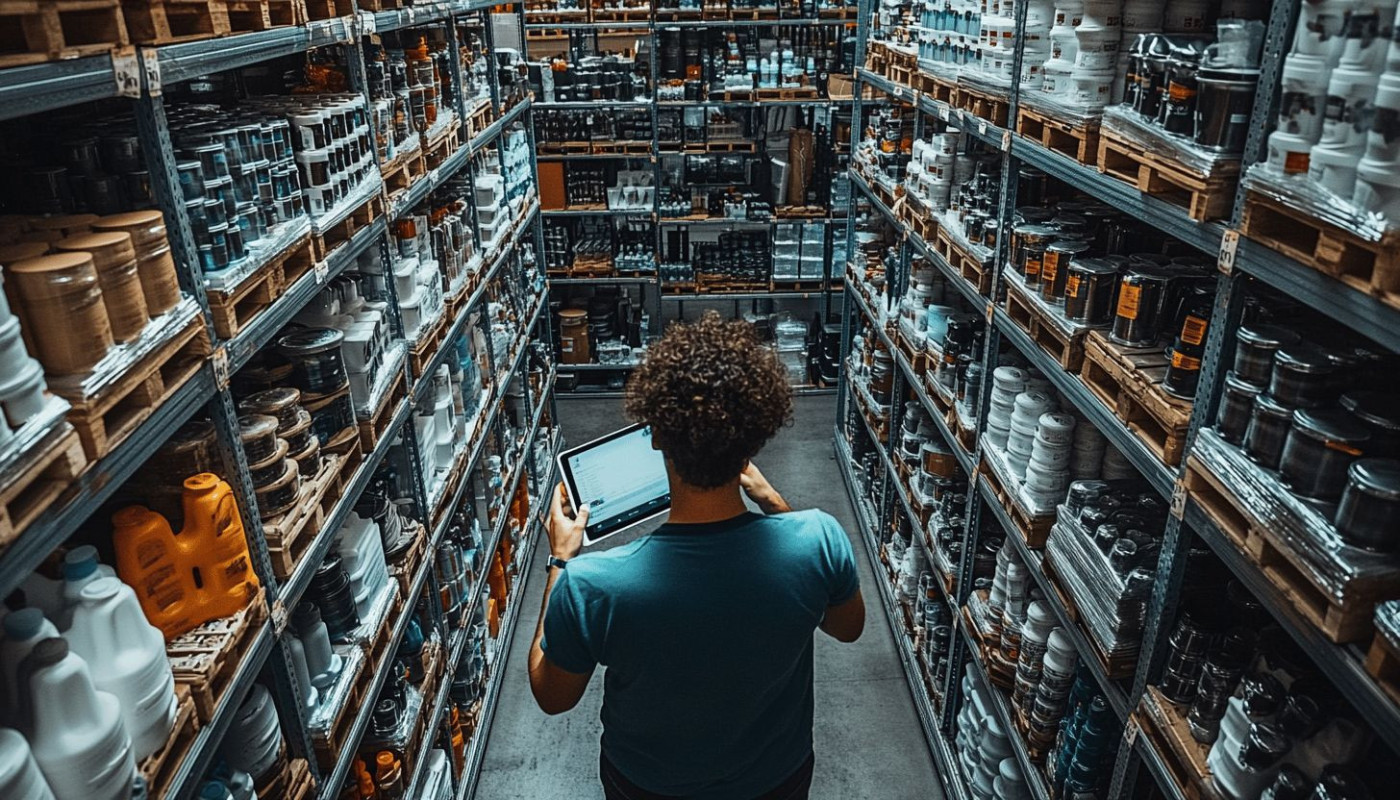Table of contents
In the bustling world of small businesses, efficiency is not just a buzzword; it's the backbone of profitability and long-term success. As these nimble organizations navigate the challenges of a competitive marketplace, attention is increasingly turning towards the role of packaging in their operational strategies. Sustainable packaging solutions hold the promise of not only reducing environmental impact but also streamlining supply chains and enhancing customer engagement. This shift represents a significant opportunity for small businesses to innovate and demonstrate their commitment to responsible practices. Discover how tapping into sustainable packaging can lead to a leaner, greener, and more efficient business model. This blog post will delve into the multifaceted advantages of embracing sustainable packaging and offer actionable insights for small businesses aiming to optimize their operations without compromising on their eco-conscious values. Prepare to explore the transformative power of rethinking packaging through a lens of sustainability.
Understanding Sustainable Packaging
Sustainable packaging encompasses a range of solutions designed to minimize environmental impact while still meeting the practical demands of product protection and distribution. This approach to packaging focuses on utilizing eco-friendly materials that are either biodegradable, compostable, or recyclable, thereby reducing waste and resource consumption. For small businesses, the adoption of sustainable packaging represents a commitment to environmental stewardship, potentially reducing their carbon footprint and aligning with the values of environmentally conscious consumers. Unlike traditional packaging that often relies on single-use plastics and materials with high environmental costs, sustainable options prioritize green packaging solutions like recycled cardboard, plant-based plastics, and other biodegradable options.
Furthermore, these sustainable choices are not only beneficial for the planet but can also offer economic advantages through potential cost savings in waste management and improved brand image. By performing a life cycle assessment (LCA), businesses can evaluate the comprehensive environmental impact of their packaging options, from production to disposal, to ensure they are genuinely reducing their ecological footprint. The array of available sustainable packaging materials and designs is vast, and businesses can select the most appropriate solutions by considering factors such as product type, shelf life, and transportation needs. In embracing packaging sustainability, small businesses can play a pivotal role in fostering a more sustainable economy and society.
Cost Benefits and Efficiency Gains
For small businesses, adopting sustainable packaging can translate into significant cost-effective benefits. By focusing on materials that are both environmentally friendly and less resource-intensive, companies can experience long-term savings. These savings are multifaceted, encompassing reduced material usage, which in turn minimizes the costs associated with purchasing and handling. Additionally, with an emphasis on waste reduction, small enterprises can lower their waste management expenses, a not insignificant factor in their overall budget.
Efficient design plays a pivotal role in the supply chain optimization, particularly by reducing package volume and weight. This streamlining leads directly to decreased transportation costs, as lighter and smaller packaging requires less fuel to transport. Furthermore, the compact nature of well-designed sustainable packaging implies that less storage space is required, both on the shelves and in transit, contributing to further cost containment and efficiency enhancements.
Moreover, many governments now offer incentives to businesses that demonstrate a commitment to eco-friendly practices, including the use of sustainable packaging solutions. These incentives can come in the form of tax breaks, grants, or other financial support, making the initial investment into sustainable packaging even more advantageous for small businesses. Thus, the switch to sustainable packaging is not merely an ethical decision but also a strategic financial move that can lead to a competitive advantage.
Consumer Perception and Brand Value
The impact of sustainable packaging on consumer perception is profound, especially in an era where eco-conscious consumers are increasingly influential. Brands that adopt eco-friendly packaging solutions are likely to see a significant uptick in perception as responsible and forward-thinking entities. This shift in consumer mindset can translate into enhanced brand loyalty, as customers tend to stick with brands that reflect their personal values and commitment to environmental stewardship. In the sphere of Corporate Social Responsibility (CSR), sustainable packaging is a tangible display of a company's dedication to positive environmental practices, which can bolster its reputation and credibility.
Moreover, the move towards sustainable packaging can potentially increase a business's market share by appealing to a broader demographic. Today's market includes a substantial segment that prioritizes sustainability and will opt for products from brands demonstrating a commitment to this cause. Packaging, in this context, serves as a silent communicator of a brand's values; it tells a story about the company's priorities and ethics without the need for words. In the competitive landscape of small businesses, brand differentiation is key to standing out. Sustainable packaging provides a clear point of differentiation, offering a competitive edge by aligning the company with the values of its customer base and demonstrating that the brand is not just a profit-driven entity, but a responsible member of the global community.
Regulatory Compliance and Future-Proofing
With a rapidly evolving regulatory landscape in waste management and packaging, small businesses are often navigating a complex web of compliance requirements. Staying abreast of legislative changes is not merely about adhering to laws — it is a strategy for future-proofing a business. By embracing sustainable practices now, such as using recyclable materials and reducing packaging waste, small businesses can avoid the pitfalls of future regulations and the penalties that come with non-compliance. The pursuit of sustainability can thus serve as a formidable competitive advantage, setting a company apart as a leader in eco-consciousness within its industry.
Moreover, the concept of the Circular Economy is becoming increasingly prevalent, wherein resources are reused and recycled for as long as possible. This model is a vital pillar of sustainability and is often encouraged by legislative measures. Companies that align with such a model not only demonstrate regulatory compliance but also build resilience against potential supply chain disruptions caused by raw material shortages. Integrating sustainable packaging solutions can be a significant step toward this model. For instance, incorporating cardboard dividers into packaging strategies can reduce material use while still protecting products, showcasing a commitment to both efficiency and environmental stewardship.
By being proactive in their sustainability efforts, small businesses ensure that they are not just responding to the current market conditions but are also prepared for what the future holds. The agility to adapt to new regulations and consumer expectations can open new markets and foster trust with a growing base of environmentally conscious consumers. In essence, sustainability is not a static target but a dynamic process that can evolve with a company's growth and the changing demands of the market.
Implementing Sustainable Packaging in Your Business
For small businesses looking to make a significant impact on the environment and their operations, integrating sustainable packaging practices is a pivotal step. An initial packaging process assessment can shed light on the current state and highlight opportunities for improvement. This means scrutinizing the materials, methods, and costs involved in packaging to pinpoint areas where sustainability can be enhanced. Clear goals should be established to guide the transition towards greener packaging solutions, with specific, measurable, achievable, relevant, and time-bound (SMART) objectives.
Involvement from all stakeholders is vital in this transformation. This includes employees, customers, and suppliers, ensuring that each party understands the benefits and contributes to the shared objective of sustainability. Initiating small changes can lead to substantial, long-term results. For instance, swapping out plastic fillers for recycled paper alternatives can serve as a simple starting point. As these practices become ingrained in the business operations, scaling up these efforts will become more seamless.
Forming supplier partnerships is another integral aspect of sustainable packaging integration. Seeking out suppliers who prioritize green supply chain management (GSCM) can support your business in adhering to sustainability standards while also potentially reducing costs. Additionally, businesses should commit to a strategy of continual evaluation and adaptation. This means regularly reviewing packaging strategies and being open to implementing new technologies or methods that enhance sustainability. By taking these steps, small businesses can play a substantial role in the movement towards a greener future while also driving efficiency within their operations.
Similar articles













